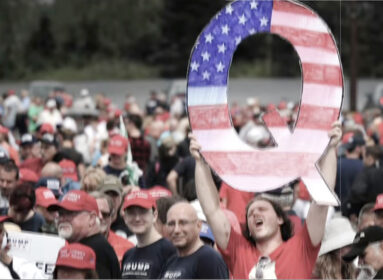
By Debrah Fineblm/JNS.org
Beckah Restivo is glad she attended college at George Washington University, where the school’s proximity to the U.S. Holocaust Memorial Museum allowed her fascination with Holocaust history to blossom.
As the world marks Yom HaShoah (Holocaust Memorial Day) on April 12, staffers at the museum say Restivo represents a growing phenomenon: third-generation Holocaust survivors fascinated by–and determined to honor–their grandparents’ experience.
Restivo’s grandfather, Hy Auerhan, was a teen growing up in Frankfurt, Germany, when he was snatched from the jaws of the oncoming Nazi scourge and sent to live with a Jewish family in Los Angeles.
The year was 1936, three years before Hitler’s plan to rid Germany and later all of Europe of Jews took full effect. But the noose had already started to tighten on the country’s Jews in the form of increasingly restrictive anti-Semitic laws. Many parents, feeling the encroaching danger, were willing to be separated from their children to ensure their safety.
Restivo’s passion for her grandfather’s story began at the age of 11, when she learned about the Holocaust and “found myself really, really interested in finding out more about my grandfather and the other Jews who were targeted,” says the resident of Beverly, Mass., who grew up in San Diego.
Though her grandfather was Jewish, Restivo was raised and remains a religious Christian–a fact that does not appear to diminish her commitment to publicizing the history of the Holocaust.
“My great-grandfather Felix, whose housewares store was burned down during Kristallnacht, was sent to the Riga ghetto in Latvia and no one is known to have returned from there,” she says. “My grandfather and great-uncle managed to escape and miraculously found each other after the war. Then my great-uncle returned to Germany with the U.S. Army and helped liberate the camps. Both of them went on the have families and live good lives. The fact that my family and I are alive today is proof that Hitler didn’t win after all.”
For survivors’ grandchildren like Restivo, who repeatedly interview their grandparents and record the results, the U.S. Holocaust Memorial Museum works to anchor family stories in a historical context. Much of the museum’s resources come from the International Tracing Service (ITS), an archive of Holocaust records established by the Allies after the war as families searched desperately for relatives or at the very least, knowledge of their fates.
Headquartered in Bad Arolsen, Germany, the archive boasts millions of pages of documentation. But until a decade ago, these were hidden from view. Only since 2007, after the museum and others pushed for it, did the public receive access. Eight nations now have functional copies of the ITS.
“It blows people’s minds how much we have available, how much we can help them put the pieces together and, for someone like Beckah, who has already done so much of the homework, to provide that missing piece to the puzzle,” says Sara-Joelle Clark, a researcher with the museum’s Holocaust Survivors and Victims Resource Center, which fields about 250 requests each month.
“Beckah’s story shows that this third generation, which is more comfortable with technology, is engaged with the search for their family legacy, and getting more engaged all the time,” adds Clark. “Her dedication is such an inspiration to others her age.”
A typical highlight of her job, Clark says, is when a child on a field trip to the museum approaches her to say their grandparent or great-grandparent was a Holocaust survivor.
“When we sit down and I show them what they can learn about their family, they’re amazed and the other kids gather around,” she says. “It’s eye-opening for everyone.”
It’s important for the public to know that access to the museum’s resources is completely free, says Diane Afoumado, chief of research and reference for the Holocaust Survivors and Victims Resource Center.
“Even 70 years later, we are still helping to bring families together or bring closure to families who didn’t know what happened to their loved ones,” she says.
Not just families, but also researchers and scholars can access the museum’s voluminous resources; 200 million pages have been digitized and the archive is continuously updated, according to Betsy Anthony, program manager at the museum’s Mandel Center for Advanced Holocaust Studies.
“Everything I know about my family history, besides my grandfather’s and great-uncle’s actual firsthand accounts, has been driven by the resources at the museum, and I’m so grateful,” says Restivo, who is hoping to write a book on the subject.
“For me and everyone else who’s passionate about keeping these stories alive, with survivors dying every day, it’s our generation’s job to learn more,” she says. “Sharing it is the most important way we can honor those who survived and those who didn’t. To keep genocide from repeating, the museum is an important reminder of what can so easily happen when hate takes over.”
CAP: Sara-Joelle Clark (left), a U.S. Holocaust Memorial Museum researcher, shows documents she found in the International Tracing Service archive to Beckah Restivo, who was looking for information on her great-grandfather Felix. Credit: U.S. Holocaust Memorial Museum.







 Southern New England Jewish Ledger
Southern New England Jewish Ledger













